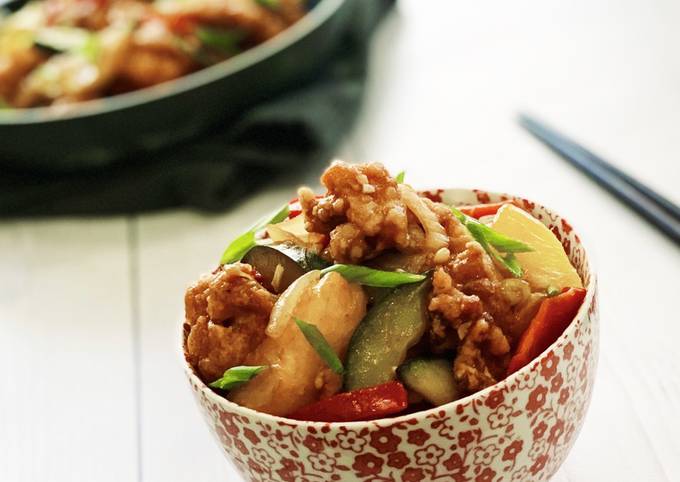
Hey everyone, it is me, Dave, welcome to our recipe page. Today, we’re going to prepare a special dish, pig trotter vinegar. One of my favorites food recipes. For mine, I am going to make it a bit unique. This is gonna smell and look delicious.
Pig's trotter vinegar is a heritage Cantonese dish is especially good for postnatal recovery during the 'confinement period'. According to Traditional Chinese Medicine (TCM), ginger is believed to warm the womb and purge "wind" generated during childbirth. The pig's trotters (aka pork knuckles) are so moist, tender and succulent after the slow cooking in the tasty sweetened black vinegar. The natural collagen of pig's trotters is very good for our health too.
Pig Trotter Vinegar is one of the most popular of recent trending foods in the world. It’s easy, it’s fast, it tastes delicious. It’s appreciated by millions daily. They are nice and they look wonderful. Pig Trotter Vinegar is something which I’ve loved my whole life.
To begin with this particular recipe, we have to first prepare a few ingredients. You can cook pig trotter vinegar using 7 ingredients and 7 steps. Here is how you cook it.
The ingredients needed to make Pig Trotter Vinegar:
- Make ready 10 pieces spare ribs or
- Prepare 1 pig trotter (chopped into pieces by supermarket assistant)
- Prepare 2 big pieces of old ginger (remove skin and cut into slices)
- Make ready 1 big bottle of black sweet rice vinegar (chan Kong thye)
- Get 8 eggs
- Take 1 packet gula malacca (sing long)
- Get 4 tablespoons sesame oil
Nevertheless, it is now a common dish enjoyed by everyone in the family. The natural collagen of pork trotters is very good for one's health too. This dish of tender, gelatinous pork trotters stewed in sweet tangy vinegar is a popular Cantonese dish. The collagen-rich meat coupled with the warming ginger and vinegar is thought to be very nourishing and is traditionally eaten by women after birth during their confinement period.
Instructions to make Pig Trotter Vinegar:
- Put the room temperature eggs into a pot and fill with water. Amount of water should enough where it is one inch above the eggs. Boil for 6 to 7 minutes and switch off the fire. Let them cool down before peeling the shells.
- Blanch the spare ribs with boiling water for about 5 minutes. Drain the water and set the pork aside. If using the pig trotter, cut away the fats and use twister to remove the hair on the skin after blanching.
- Pour 4 tablespoons of sesame oil and ginger slices into a pot to fry a while.
- Add in half a bottle of vinegar and same amount of water into the pot with the vinegar. The ratio of vinegar to water is 1:1. Cover the pot and let it boil.
- When the vinegar in the pot boils, put in the blanched pork. Turn the fire to medium small and let it boil for 30 minutes.
- After 30 minutes, put one gula malacca sugar in. Continue to cover and boil until sugar melts (about 5 to 10 minutes).
- After the sugar melts, taste to see if OK. If the stock is OK, put the hard boil eggs in. Add a bit of cornflour with water mixture to thicken the stock slightly.
This dish of tender, gelatinous pork trotters stewed in sweet tangy vinegar is a popular Cantonese dish. The collagen-rich meat coupled with the warming ginger and vinegar is thought to be very nourishing and is traditionally eaten by women after birth during their confinement period. Pig Trotter in Vinegar with Ginger 猪脚醋 is an old traditional Cantonese recipe originally formulated for mothers after birth, to keep new mums warm during the first month after birth. Black Sweet Vinegar Pork Trotter is a classic, Cantonese heritage dish. It is a dish that has it all - sweet, sour, savoury and gingery.
So that is going to wrap it up for this exceptional food pig trotter vinegar recipe. Thank you very much for reading. I am sure you will make this at home. There’s gonna be interesting food at home recipes coming up. Don’t forget to save this page in your browser, and share it to your loved ones, colleague and friends. Thank you for reading. Go on get cooking!

